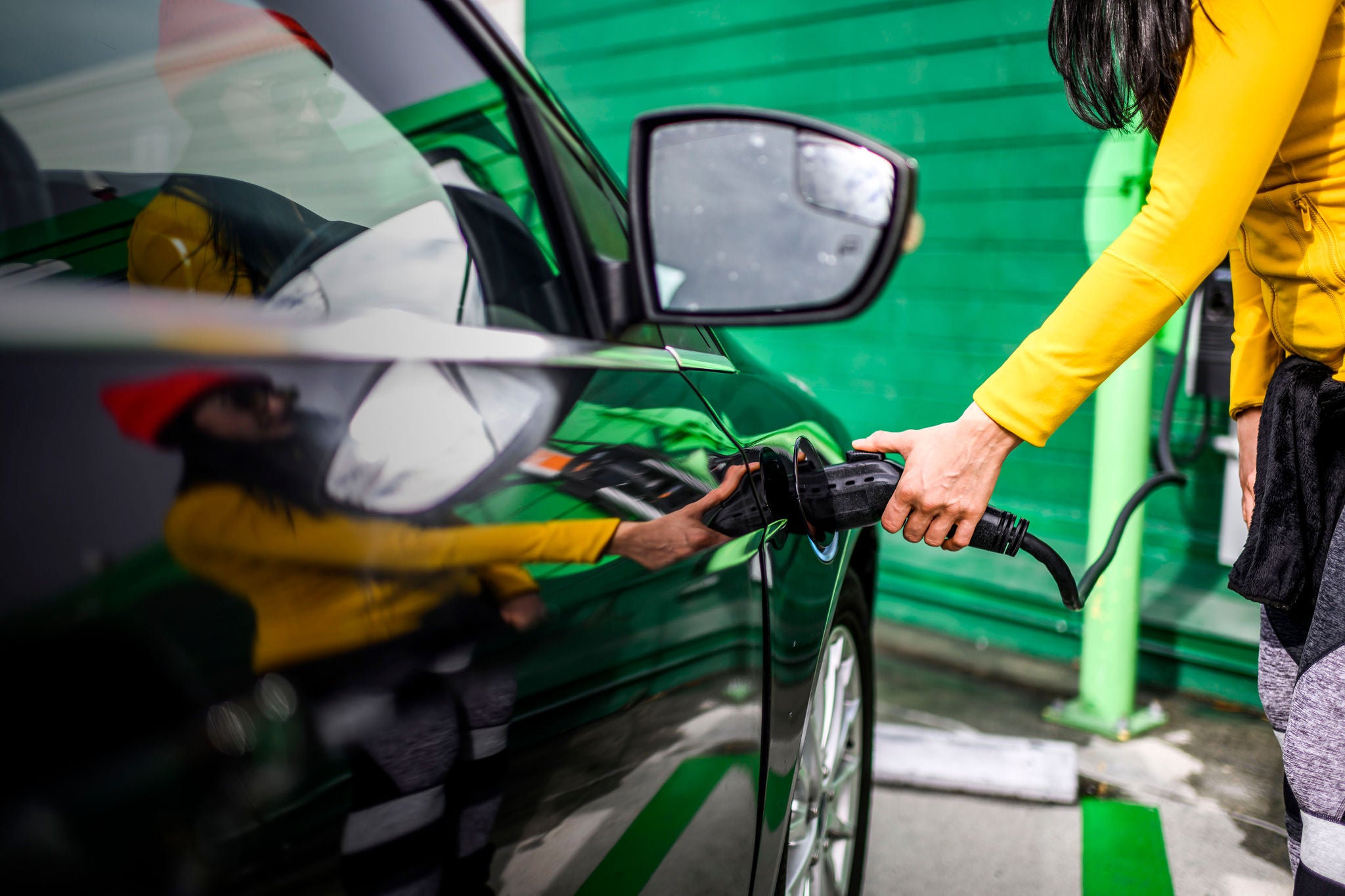EY refers to the global organization, and may refer to one or more, of the member firms of Ernst & Young Global Limited, each of which is a separate legal entity. Ernst & Young Global Limited, a UK company limited by guarantee, does not provide services to clients.

Automakers and manufacturers must act now to develop a secure supply of the resources critical to electric vehicle (EV) production.
In brief
- As EV adoption continues, demand for the minerals used to produce and power them is also soaring.
- Three obstacles may threaten the supply of these minerals and hinder future EV growth and development.
- Actions taken now by automakers and original equipment manufacturers (OEMs) can mitigate risk and protect the future supply chain
The future of mobility is electric. By 2033, sales of battery electric vehicles (BEVs) and plug-in hybrid vehicles (PHEVs) will surpass that of both internal combustion engine (ICE) and hybrid vehicles in China, Europe and the United States, with the transition likely to be even faster in the EU due to post-COVID-19 clean transport incentives. In the third quarter of 2020, registrations of electrically chargeable vehicles in the EU more than tripled (+211.6%) to 273,809, claiming a market share of 9.9%, of which 135,461 were BEVs.1
But the disruption of the automotive and transportation sectors may hit a roadblock if automakers and vehicle manufacturers cannot develop a secure supply of the key minerals used to build electric vehicles (EVs), batteries, charging infrastructure, digital interfaces and renewable energy.
By 2030:
Demand for lithium and cobalt is forecast to increase by an estimated 637% and 183%, respectively.
Tesla alone could need up to 1.15 million tonnes of nickel each year — almost 50% of the current global supply — to meet targets.
An additional two million tonnes of copper will be required each year to produce the estimated 30 million EVs. An EV includes about five times as much copper as an ICE vehicle. And more will be needed for charging ports and infrastructure.
Even if battery technology evolves, green hydrogen becomes a reality or recycling rates improve, we will still require a significant increase in the supply of minerals to meet demand forecasts.
Chapter 1
Three major obstacles threaten the supply of mobility minerals
Geopolitical risk, capital pressures and ESG issues make it harder to secure reserves.
Securing an additional supply of the minerals and metals critical to meet the demand for EVs will require action now to overcome significant obstacles:
1. Geopolitical uncertainty may disrupt mineral production and restrict access
The world has enough reserves of many key minerals — the challenge is accessing them. Much of their production is geographically concentrated and constrained by complex factors, including technical difficulties around geology and extraction, politics, laws, environmental regulations, land restrictions, economics and infrastructure.
China controls a significant portion of the downstream processing of lithium, cobalt and graphite as Chinese state-owned enterprises have purchased or funded mines to ensure offtake for downstream processing.
Geopolitical uncertainty is a growing risk to mining and metals companies, as highlighted in the EY Top 10 business risks and opportunities for mining and metals in 2021 report. Regulatory changes and trade protectionist measures are threatening production and trade of some minerals. This is prompting countries to consider developing domestic capacities or diversifying supply by setting up processing facilities outside of China. The US Government is investing in critical minerals, the EU is focusing on developing an EV supply chain2 and discussions continue in Australia around investing in battery mineral processing facilities.
2. Capital investment is challenged by price volatility
Developing the new projects required to meet soaring demand will require a significant amount of capital. Canaccord Genuity estimates that more than US$20b of capital investment will be required to fund lithium greenfield projects alone to meet 2030 demand forecasts.3
But even with a positive demand outlook, access to capital in the mining sector remains challenging. Investors are deterred by price volatility, long project lead times, the need to increasingly assess ESG factors and the small market size of some battery minerals.
The industry’s volatility and cyclicality can cause severe fluctuations in prices, which can affect the economic fundamentals of projects even when there is a positive outlook for demand. For example, recent years saw lithium miners invest heavily in new projects to increase supply and meet demand for EV batteries. However, slower EV production in late 2019 and COVID-19 in 2020 saw rising supply hit volatile demand, and lithium carbonate prices fell from a global average of US$16,031/t in November 2017 to US$6,387/t in October 2020. Subsequent liquidity challenges have led some miners to put capital expenditure on hold. Tianqi has delayed its investment decision on the Kwinana plant,4 while Eramet has put its Argentinian lithium mine on hold.5
Countering this price volatility means that shareholders must be prepared to invest for the longer term and factor in long project lead times. It can be three to five years until a mining project is operational, sometimes longer. It may take more than seven years before lithium brine projects begin production.
Commodities with larger markets — for example, copper and aluminum — are more easily able to attract capital compared with minor minerals. Even with demand growth, the annual trade value of lithium and cobalt in 2025 is still forecast to be less than a tenth the size of copper. But major miners are beginning to invest in battery minerals. BHP has formed an alliance to explore for nickel in Canada,6 while Rio Tinto has invested in a lithium project in Serbia and is producing lithium as a by-product of its US Boron mine.
3. Producers must adapt to growing ESG pressures
How minerals are produced and the carbon emissions created during their production are under more scrutiny as manufacturers face pressure from governments, investors and end consumers for cleaner, more ethical supply chains. Miners and producers are adapting through cleaner processes and innovative new products, such as Hydro’s low-carbon aluminium products made from recycled post-consumer scrap (e.g., CIRCAL 75R)7 or primary metal from hydropower smelters.
The source of some metals, such as cobalt, raises concerns around ethical production methods and highlights demand for more transparent supply chains. Battery producers are trying to reduce the amount of cobalt used in batteries, finding some success in adding more nickel as a stabilizing factor. However, this brings other supply and environmental challenges. The majority of recent nickel discoveries are in laterite (oxide) ores, usually used to produce nickel pig iron and ferronickel for the stainless steel industry. They can be processed into Class 1 battery nickel, and companies in Indonesia are planning to do so, but the process can cause acid spills.8
Chapter 2
How do automakers and OEMs develop a supply of minerals?
Actions taken now can protect the future EV supply chain.
We believe that minerals supply risk is one that automotive companies and vehicle manufacturers need to be considering now. Failure to secure resources could significantly impact future growth and product development.
Some automakers have used acquisitions to proactively secure supply: Great Wall Motors has bought a 3.5% stake in Pilbara Minerals,9 and Volkswagen has acquired a 20% stake in Chinese battery maker Guoxuan.10 For the most part, though, this is an issue without a quick solution. Typically, it takes many years to develop resources: projects must be defined, capital must be secured, regulatory approval must be given, and then mines and infrastructure undergo a lengthy construction process. Even when all these factors are lined up, a project may be undermined by a sudden decline in commodity prices.
This complexity means that companies should consider several diverse strategies to help ensure security of supply:
- Trading functions: Automakers and OEMs could consider setting up trading functions in minerals, similar to the way that oil refiners did once production of crude switched from companies such as BP to the likes of Saudi Aramco.
- Offtake agreements or acquiring direct interests: These arrangements provide confidence regarding a secure supply. For example, Tesla has agreed with Piedmont Lithium that the company will supply about one-third of its planned production of spodumene concentrate (160ktpa) over an initial five-year term.11
- Investment funds: Taking an indirect interest in mining companies does not directly secure supply for companies, but it does help ensure adequate financing of mining projects generally.
- Consortiums to guide government policy: Forming consortiums with other players in the ecosystem can help influence governments to acquire mines and build EV domestic supply chains.
- Proactive collaborations to tackle ESG considerations: Working together with miners can help automakers and OEMs more effectively reduce emissions along the value chain, lessen their environmental impact and protect human rights of workers.
- Use blockchain to confirm responsible sourcing: IBM, Ford and Volkswagen Group have launched the Responsible Sourcing Blockchain Network,12 which is scaling the ethical sourcing of minerals.
- Explore recycling and repurposing: Reusing EV batteries offers a significant opportunity to conserve resources.
Accelerating the future of mobility
The electrification of transport will be an important element of the transition to a low-carbon energy future. But unless we can develop adequate, secure supplies of the mineral reserves critical to e-mobility, this transition may stall. Acting now can mitigate potential supply risks. Automakers and OEMs that adopt a multipronged approach can overcome three major obstacles and build a strong EV supply chain for the future.
Summary
The electrification of mobility will be an important move toward our zero-carbon energy future. But securing this future will depend on automakers and OEMs acting now to secure supplies of the key minerals critical for building electric vehicles, batteries and infrastructure.
How EY can help
-
Our Digital Navigator takes an end-to-end approach to the development of a digital vision, strategy and actionable road map for mining and metals companies.
Read more
Related articles
How advancing mobility will disrupt the mining and metals sector
Within a decade, most urban transport will be electric. Is the mining and metals sector ready to meet demand?




